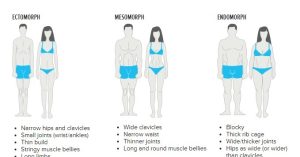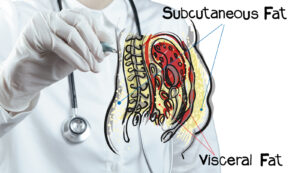If you’ve dieted at least once, you have heard the term ‘metabolic adaptation’.
It’s a fancy term to explain what happens with your body when doing some changes in your body (like losing fat) and it’s something that will happen to everyone.
The thing is…
Not everyone knows that 1) it’s normal 2) what to do when it happens.
That’s why the reaction for many is to simply “do what they did before” and cut 300–500kcal (some even more) from their diet.
And while the idea and intention are correct, the execution is not.
Why?
Because it’s very likely (based on your current situation) that you’ll plateau again, and then you’d want to cut more calories from your diet.
If you keep just lowering your calories whenever you hit a plateau, then you’ll eventually get to a very low and unsustainable amount of calories per day.
That’s the #1 reason people end up not keeping their lifestyle around their eating.
It should be the other way around.
Plus, know that cutting calories is just part of the equation… as you have exercise activity as something you can do (and increase).
But the same problem can happen with calories.
Some people think they just need to exercise more, so they go and spend 1-hour (at least) on a treadmill every day.
Maybe that’s why it isn’t surprising to see people eating less than 1,000kcal while starving themselves and spending hours doing cardio…
All just to not get past the plateau.
But, what can you do then to resume your progress after a metabolic adaptation?
As I said before, the issue is not the idea of what to do when people cut calories or increase their exercise activity, the issue is in the execution.
You don’t need to drastically increase the amount of exercise or cardio you do in a day.
And you don’t have to cut 500kcal out of your diet either.
In some cases, it’s more than a 3–5% increase in activity or decrease in calories to make the scale move.
So if you were to be eating 1,800kcal, with a 3–5% deficit (from 54kcal to 90kcal) can be good enough to get past a metabolic adaptation.
You’ll need to make the adjustments yourself based on your progress, but always start with the most conservative number.
Plus, these numbers aren’t magical… and you may need sometimes “aggressive” more adjustments.
But for most people, this range is a good starting point to get to know their body and how it responds.
And in some cases, sometimes doing little “tweaks” in your diet can help you get over a plateau.
If you sign up below, you’ll get not only some “tweaks” you can make in your diet… but you’ll get daily email tips that help you make the next diet you make the last one you’ll need.
Ivan @ Fitnessthetic




